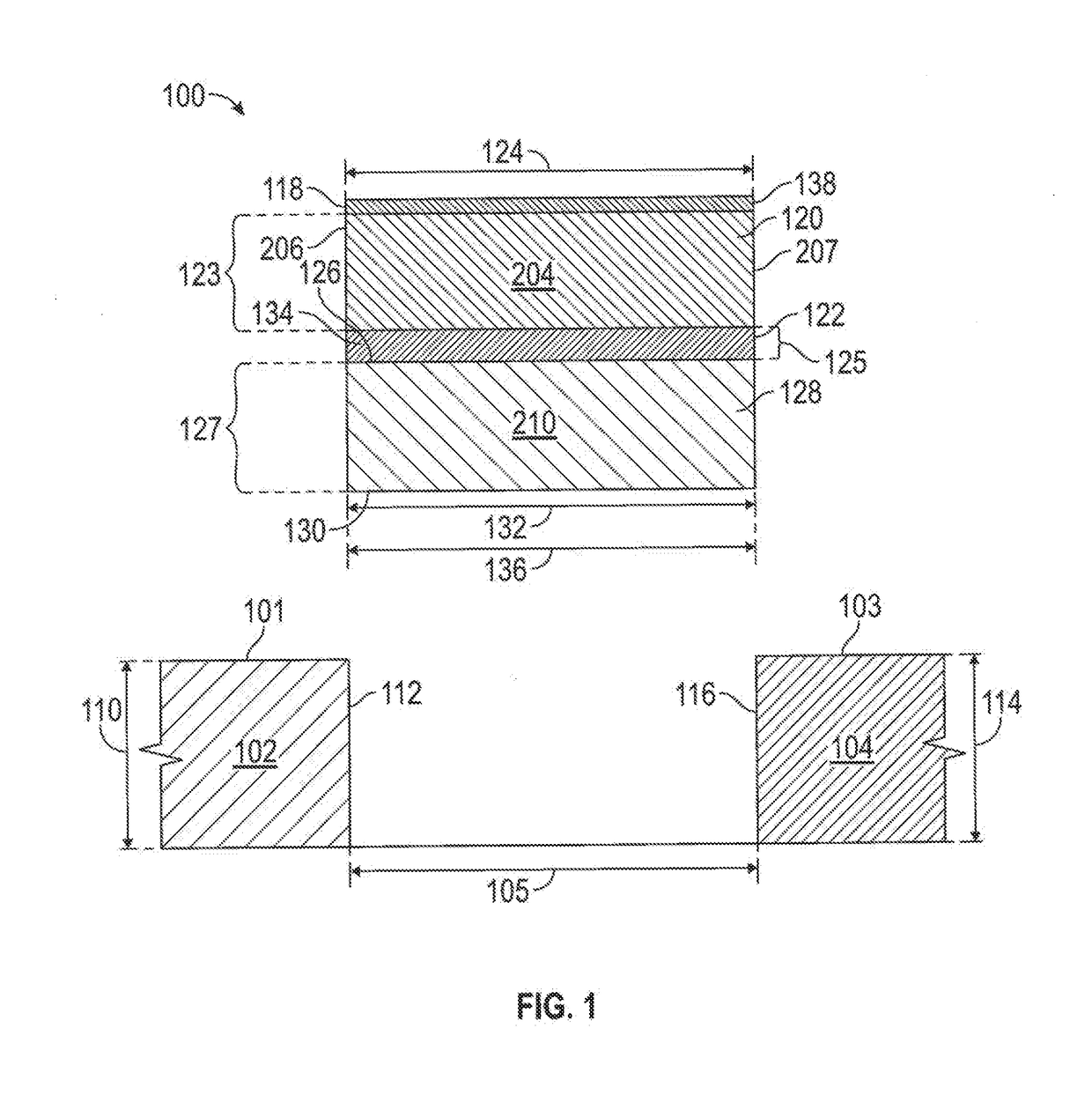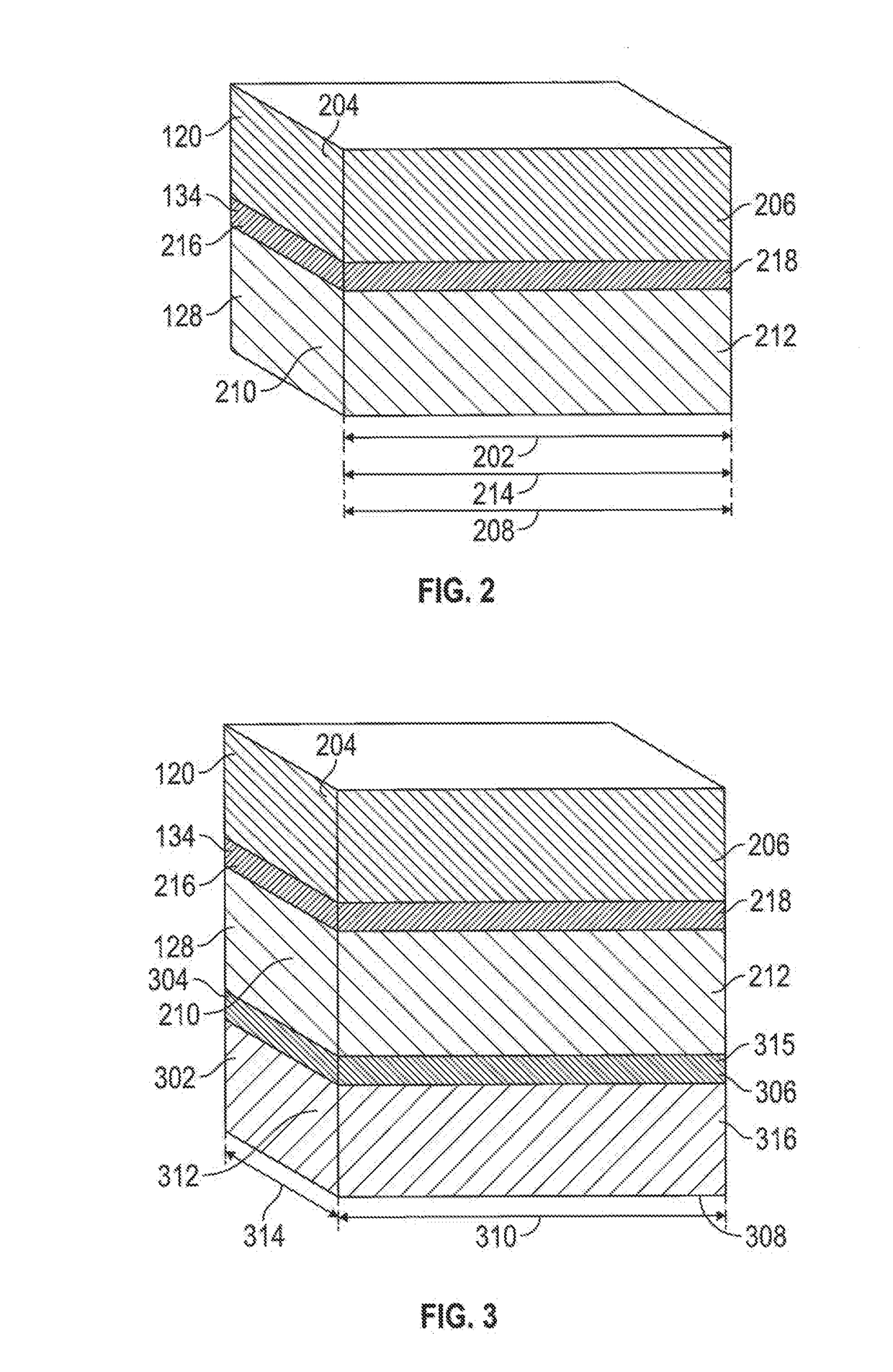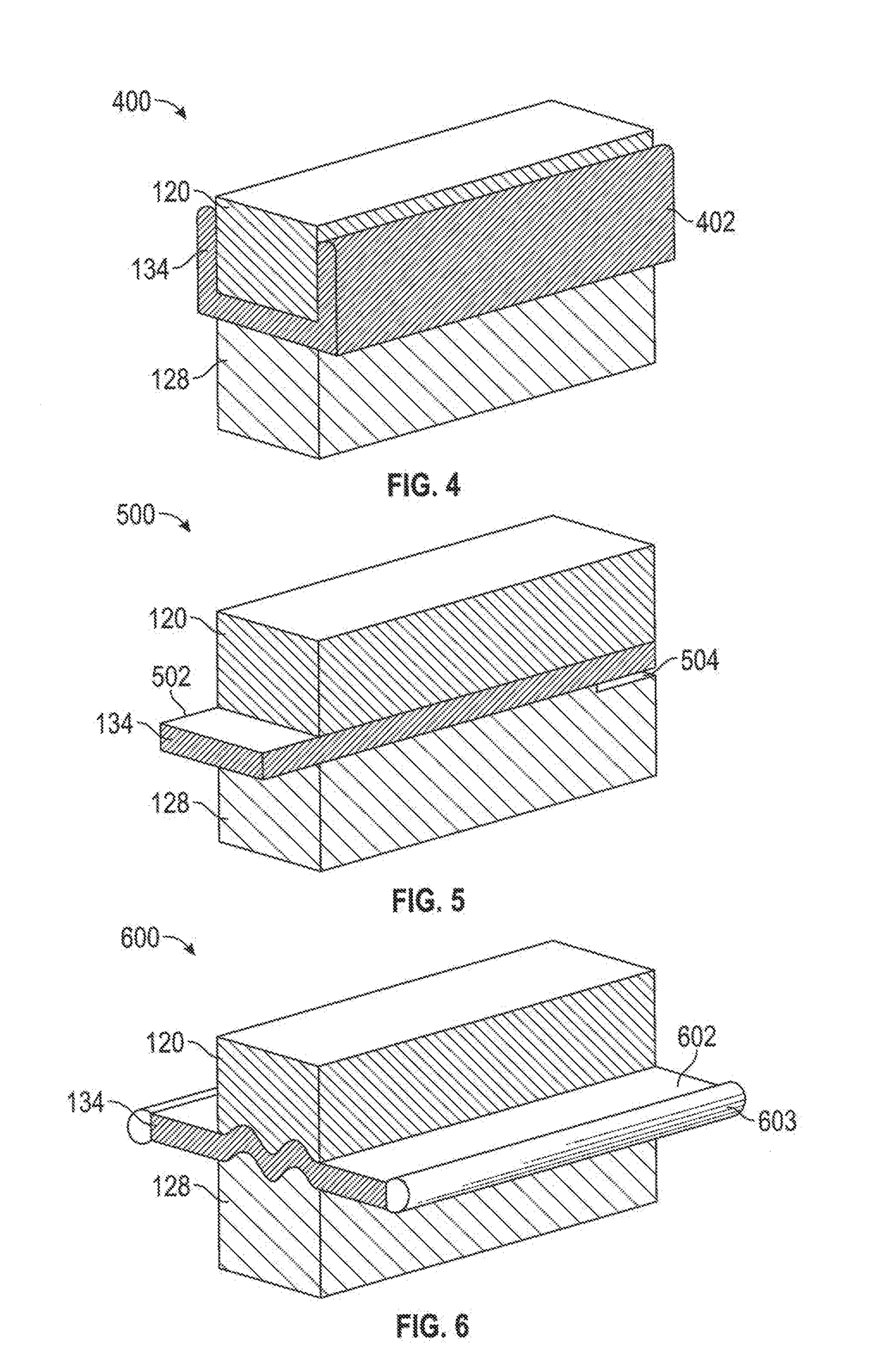Joint seal system with shaped barrier and wings
a seal system and joint technology, applied in the field of joint seal system with shaped barrier and wings, can solve the problems of sealing system failure, thick and inflexible seals, and joints that are subject to damage,
- Summary
- Abstract
- Description
- Claims
- Application Information
AI Technical Summary
Benefits of technology
Problems solved by technology
Method used
Image
Examples
first embodiment
[0078]Referring to FIG. 1, the joint seal 100 may further include an elastomer 138, such as silicone adhered to the first body top 118 and / or to the bottom of the bottom-most layer or body 128, the second body bottom 130 in the Alternatively, as illustrated in FIG. 9 the joint seal 100 may alternatively include a resilient flexible surface barrier 902, such as one or more layers of a synthetic rubber roofing membrane, including ethylene propylene diene terpolymer (EPDM), bonded or adhered to the first body top 118, such as by heating of materials or by adhesive. The surface bather 902 may include at its distant end 904 an upper elongate appendage 906 and, below and generally coplanar, a lower elongate appendage 908, formed, for example, by the lack of adhesive between two adjacent layers or bodies and by cutting a single layer or body along its edge 910. The surface barrier 902 may lap over or about the membrane of a roofing system to provide an effective seal. The surface barrier ...
embodiment 400
[0086]Referring now to FIG. 10, the barrier 134 of the embodiment of FIG. 3 may be provided with a barrier width 1002 which is greater than the first body width 124 and the second body width 132 to provide a first wing 1006 and a second wing 1008. The second barrier 304 may have a second barrier width 1004, greater than each of the second body width 132 and the third body width 314. Each wing 1006, 1008 may include at its distant end 1010, 1012 an upper elongate appendage 1014, 1016 and, essentially co-planar and below, a lower elongate appendage 10181020, formed, for example, by the lack of adhesive between two adjacent layers or bodies and by cutting a single layer along an edge 1022. Such appendages may lap over or about a roofing system to provide an effective seal. Referring now to FIG. 4, in an alternative embodiment 400, the joint seal includes a first body of compressible foam 120, a second body of compressible foam 128, and a barrier 134 adhered to both the first body of co...
embodiment 700
[0093]Referring now to FIG. 7, in another further alternative embodiment 700, the barrier 134 may be of a narrower width than the first body 120 and the second body 128. Thus, the barrier 134 may terminate short of the edge of the first body 120 and the second body 128. This variation allows for the benefit of the different foams for the first body 120 and the second body 128 and also allows for the barrier 134 to accept less compression while still providing its intended properties.
[0094]In connection with each embodiment, cutting the first body 120 and the second body 128 into interlocking (male / female) sections using a radius of at least 0.1875 niches permits a thicker barrier 134 to be used without bowing or deformation of the foam, a benefit previously available only when a thin barrier 134 might be used. In the prior art, use of a random accordion style would cause the barrier 134 to fatigue after cycling.
[0095]An example is a joint seal using two different fire-rated foams as...
PUM
| Property | Measurement | Unit |
|---|---|---|
| depths | aaaaa | aaaaa |
| width | aaaaa | aaaaa |
| thickness | aaaaa | aaaaa |
Abstract
Description
Claims
Application Information
 Login to View More
Login to View More - R&D
- Intellectual Property
- Life Sciences
- Materials
- Tech Scout
- Unparalleled Data Quality
- Higher Quality Content
- 60% Fewer Hallucinations
Browse by: Latest US Patents, China's latest patents, Technical Efficacy Thesaurus, Application Domain, Technology Topic, Popular Technical Reports.
© 2025 PatSnap. All rights reserved.Legal|Privacy policy|Modern Slavery Act Transparency Statement|Sitemap|About US| Contact US: help@patsnap.com



